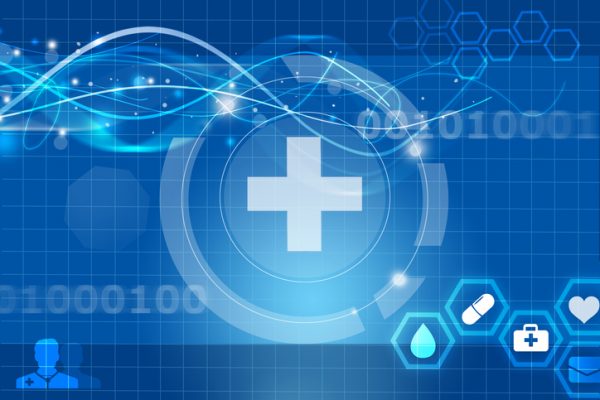
May 22 marks the inaugural MedCity INVEST Population Health conference in New Orleans the New Orleans Business Alliance. Ochsner Health Chief Clinical Transformation Officer Dr. Richard Milani will deliver the opening keynote on re-engineering healthcare for the 21st century.
In a Q&A in the runup to the conference, innovationOchsner CEO Aimee Quirk talked about some of the programs the group has rolled out such as a curated list of health and wellness apps, a pre-natal health monitoring program and digital medicines for chronic conditions.
What is innovationOchsner?
InnovationOchsner, or iO as we call it, is an innovation lab founded by Ochsner Health System. It functions like a startup that is embedded within one of the largest health systems in the Gulf South. We are focused on solving some of healthcare’s most pressing problems and creating new value by using technology and data to create personalized, patient-centered solutions to empower people to live their healthiest, best lives, while also reducing costs and making the experience of health and healthcare better for everyone. We have an incredible cross-functional, entrepreneurial team that has developed diverse portfolio of initiatives, including extensive work in digital health and machine learning/artificial intelligence. We are relentless about finding new ways to solve age-old challenges and bringing them to life in the real world to make an impact on the communities we serve.

Aimee Quirk
What was the motivation behind the O Bar InnovationOchsner rolled out and how does it complement healthcare delivery at Ochsner?
Ochsner has been an early adopter of digital health. We recognized early on that integrating smart technology and data into the way care is delivered can improve health outcomes, lower costs and make the experience and delivery of health and healthcare more efficient, more convenient and more satisfying for patients and providers alike.
In 2014, we created the O Bar, the country’s first “genius bar” for health tech. We did it because we recognized that if we wanted to drive digital health adoption in the ecosystem, we would need a way to support that transition. It allows us to engage with our patients in a different way and create a place where anyone, whether they are an Ochsner patient or not, can come to get help on how to use digital tools to improve health.
The O Bar offers a curated list of health and wellness apps, and our tech specialists can help consumers determine which one is best for their personal needs. We also offer activity trackers and wireless devices, such as blood pressure cuffs, scales and glucometers, that seamlessly integrate into the electronic health record, enabling the use of patient-generated health data in our growing portfolio of Digital Medicine programs. It’s a great service, and we have more than seven locations, including a mobile unit that goes into the community. In the end, the O Bar is a gateway for consumers to become more engaged in their health, supporting them on their journey to live healthier and more productive lives.
Can you talk about what led your organization to adopt Connected MOM to monitor pre-natal care from home?
We are always looking for ways that digital tools can improve access and the overall experience of care. We developed Connected MOM (Maternity Online Monitoring) as a way for expectant mothers to have greater connection with their care team throughout their pregnancy, with minimal disruption to their schedules. Participants use connected devices that allow them to digitally send weight, blood pressure readings and urine protein test results to their care team from the comfort of home without needing to schedule an appointment. The data goes directly into the medical record and is monitored by the patient’s care team. We’ve found this regular monitoring and virtual connection allows us to catch any issues sooner, and if the data is looking good, we can eliminate three to four office visits, which is really convenient for busy moms. It is really empowering for our patients, and they love it.
In the 15-plus months since the program’s inception, Connected MOM has enrolled more than 1,000 mothers. We saw a reduction in in-person visits by an average of 25 percent -30 percent, while simultaneously increasing patients’ engagement with Ochsner’s obstetric provider teams and enabling earlier identification of pre-eclampsia than standard care.
You also offer digital medicine programs focused on chronic conditions like hypertension and diabetes. How have you refined them over the years?
A lot of our focus in digital health has been, and continues to be, on chronic disease. That’s because chronic disease is responsible for 75 percent of deaths and 86 percent of healthcare costs in this country. It’s a big problem, and when you consider that the healthcare delivery model is still principally designed around providing episodic care for acute conditions, not for chronic conditions that are longstanding and dynamic, our team recognized that we needed to re-engineer and completely redesign the delivery model to try and move the needle on chronic disease.
We started with hypertension, the most prevalent chronic disease, and created the Ochsner Hypertension Digital Medicine program in 2015. It pairs technology and convenience with dedicated human support that offers proactive, holistic and preventive care to empower patients to achieve their health goals. This virtual program relies on data regularly sent by patients from a connected, at-home digital blood cuff via their smartphone to the electronic medical record. The data is monitored by a dedicated care team, including pharmacists, who manage medications according to the latest evidence-based guidelines, and health coaches, who provide education and support on lifestyle and other social factors. This is a continuous care model that allows us to identify trends and be proactive to prevent issues, while also increasing our engagement with patients without requiring them to come to see us.
The program works. Studies show that more than 71 percent of patients who previously had out of control BP levels achieved blood pressure levels within control range within 90 days of entering the program, compared to 31percent of patients following the traditional care model. The program also helped to increase medication adherence by 7.5 percent, compared with a 2 percent lower adherence in the usual care control group. These outcomes have led to reductions in emergency room visits and inpatient admissions, resulting in reductions in the overall cost of care. And importantly, patients and doctors love it. Our recent Net Promoter Score survey revealed an exceptional rating of 78, and patients consistently tell us the program makes them feel supported and empowered to make changes to improve their health.
We also created the Diabetes Digital Medicine program which functions similarly to the Hypertension Digital Medicine program. Patients use a digital glucometer and their smartphone to send at-home blood sugar readings to the digital care team. We are seeing great outcomes in this program as well. Participants see A1c improvements, with an absolute 0.7 percent drop after just 90 days in the program, and at the same time, are experiencing fewer or even no hypoglycemic events. Participants also report reductions in the diabetes distress and are more successful in completing recommended health maintenance activities like A1c tests and eye exams.
We are now working with payers and employers who want to offer these programs to their members as a way to improve health outcomes and reduce healthcare costs, which is exciting for us. We want to bring these services to more and more patients. This model improves health outcomes, reduces costs and improves patient engagement and empowerment, while also extending care and supporting patients to receive care when, where and how they want it. It’s a win-win.
Photo: nevarpp, Getty Images













